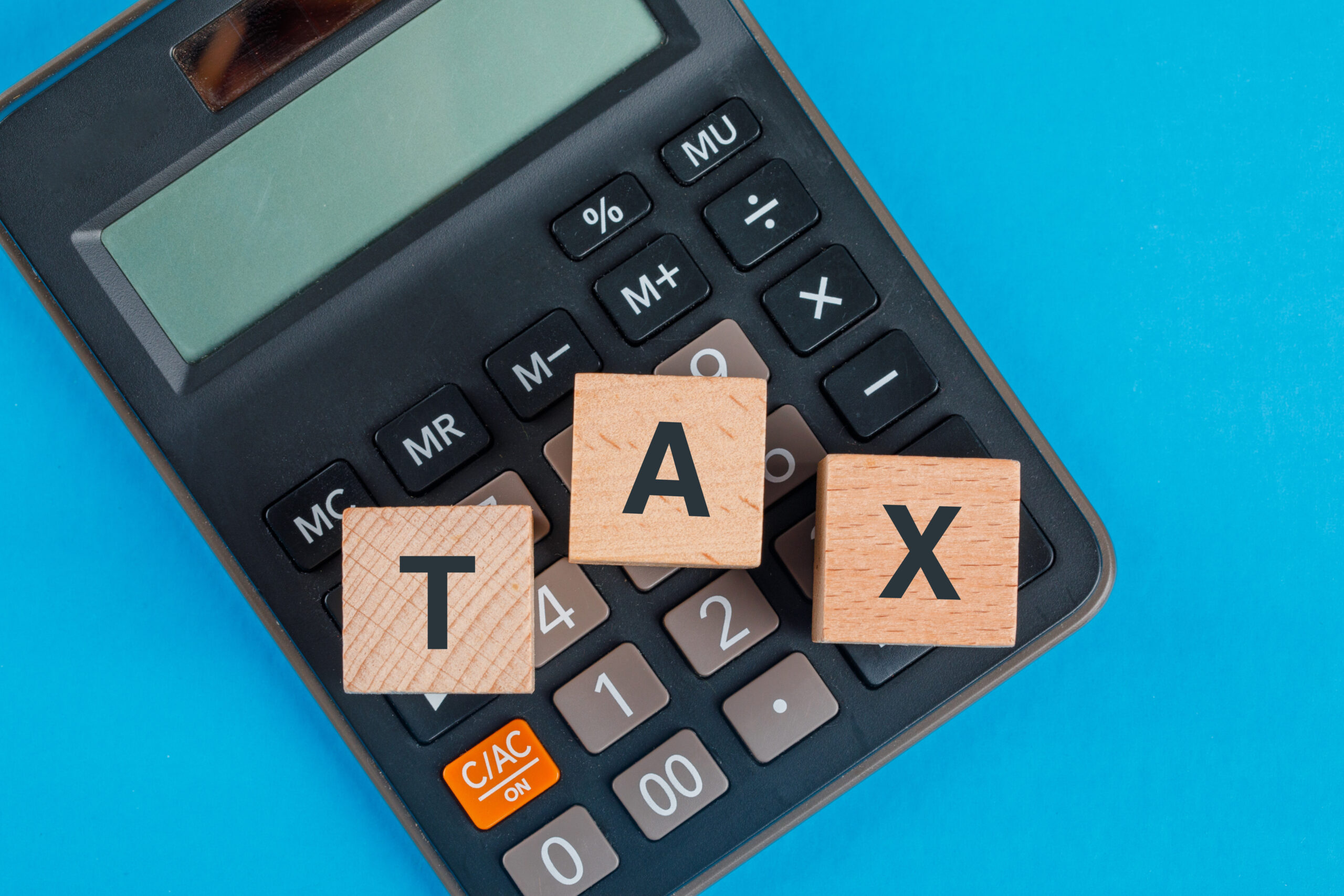Singapore’s Goods and Services Tax (GST) system, introduced in 1994, has become a cornerstone of the nation’s fiscal policy and tax structure. As a broad-based consumption tax, GST plays a crucial role in generating revenue for the government while aiming to maintain Singapore’s economic competitiveness on the global stage. This comprehensive legal analysis delves into the intricacies of Singapore’s GST system, examining its historical development, legislative framework, and practical implications for businesses operating within and beyond the city-state’s borders.
The implementation of GST in Singapore represents a significant shift in the country’s taxation approach, moving away from a heavy reliance on direct taxes towards a more balanced tax structure. This transition has had far-reaching consequences for businesses, consumers, and the overall economy. As Singapore continues to position itself as a global business hub, understanding the nuances of its GST system becomes increasingly important for both local and international stakeholders.
This analysis will explore the fundamental principles underlying Singapore’s GST, its legislative basis, and the various mechanisms put in place to ensure its effective administration. We will examine the scope of GST, including taxable supplies, exempt supplies, and zero-rated supplies, as well as the registration requirements for businesses. The analysis will also cover the intricate details of GST compliance, including filing requirements, input tax claims, and the reverse charge mechanism.
Furthermore, we will investigate the impact of GST on different sectors of the economy, including its application to cross-border transactions and digital services. Special attention will be given to recent and upcoming changes in GST legislation, such as the planned increase in the GST rate and the introduction of GST on imported low-value goods and imported non-digital services.
By providing a comprehensive overview of Singapore’s GST system, this analysis aims to equip businesses, legal professionals, and policymakers with the knowledge necessary to navigate the complexities of this important aspect of Singapore’s tax landscape.
1.- Historical Context and Evolution of GST in Singapore
1.1.- Pre-GST Tax Structure in Singapore
Prior to the introduction of GST, Singapore’s tax system was heavily reliant on direct taxes, particularly income tax and property tax. This structure, while effective in its time, faced increasing challenges as the global economic landscape evolved. The government recognized the need for a more diversified and sustainable tax base to support Singapore’s growing economy and social needs.
In the late 1980s and early 1990s, Singapore’s policymakers began to explore alternative taxation models that could provide a stable source of revenue while maintaining the country’s attractiveness to foreign investment. The concept of a consumption-based tax gained traction as a potential solution to address these evolving fiscal requirements.
1.2.- Decision to Implement GST
The decision to implement GST in Singapore was not taken lightly. It followed extensive research, public consultations, and careful consideration of international best practices. The government’s primary objectives in introducing GST were to:
1. Broaden the tax base to ensure a more stable source of revenue
2. Reduce reliance on direct taxes, particularly income tax
3. Enhance Singapore’s economic competitiveness by allowing for potential reductions in corporate and personal income tax rates
4. Create a more progressive tax system by using GST revenue to fund social programs and provide targeted assistance to lower-income groups
The introduction of GST was seen as a strategic move to future-proof Singapore’s fiscal policy, ensuring the country could continue to fund its development and social programs in the face of an aging population and increasing global economic uncertainties.
1.3.- Initial Implementation and Early Challenges
GST was officially introduced in Singapore on April 1, 1994, with an initial rate of 3%. The implementation was preceded by a comprehensive public education campaign to familiarize businesses and consumers with the new tax system. Despite these efforts, the initial rollout faced several challenges:
1. Public Perception: There were concerns about the potential inflationary impact of GST and its effect on the cost of living, particularly for lower-income households.
2. Business Adaptation: Many businesses, especially small and medium-sized enterprises (SMEs), faced difficulties in adapting their accounting systems and processes to comply with GST requirements.
3. Compliance Issues: In the early stages, there were instances of non-compliance, both intentional and unintentional, as businesses grappled with the new tax regime.
To address these challenges, the government implemented several measures, including:
1. GST Offset Package: A comprehensive package of offsets and subsidies was introduced to help lower-income households cope with the initial impact of GST.
2. Assistance for Businesses: The Inland Revenue Authority of Singapore (IRAS) provided extensive support and guidance to businesses to help them understand and comply with GST regulations.
3. Gradual Rate Increases: The government adopted a policy of gradual and announced GST rate increases to allow businesses and consumers time to adjust.
1.4.- Evolution of GST Rates and Policies
Since its introduction, Singapore’s GST system has undergone several significant changes:
1. Rate Increases: The GST rate has been incrementally raised over the years:
– 1994: Initial rate of 3%
– 2003: Increased to 4%
– 2004: Increased to 5%
– 2007: Increased to 7%
– 2023: Increased to 8%
– 2024: Increased to 9%
2. Expansion of Taxable Items: The scope of GST has been gradually expanded to include more goods and services, reflecting changes in the economy and consumption patterns.
3. Introduction of GST Voucher Scheme: In 2012, the government introduced the permanent GST Voucher scheme to provide ongoing assistance to lower-income households and seniors.
4. Refinement of GST Rules: Over the years, various refinements have been made to GST rules and regulations to address emerging issues and close loopholes.
5. Digital Economy Measures: In response to the growth of the digital economy, Singapore introduced measures to tax digital services provided by overseas suppliers from 2020.
1.5.- January 1, 2023 Developments
Beyond the increase in the GST rate, Singapore made two important evolution its GST system:
1. Low-Value Goods: From January 1, 2023, GST will be applied to imported low-value goods.
2. Imported Non-Digital Services: The scope of GST will be expanded to cover imported non-digital services for B2C transactions from January 1, 2023.
These planned changes reflect the ongoing adaptation of Singapore’s GST system to the changing economic landscape and the need to maintain a robust and fair tax structure.
The evolution of GST in Singapore demonstrates the government’s commitment to maintaining a progressive and adaptable tax system. By continuously refining and updating the GST framework, Singapore aims to ensure its tax structure remains competitive, fair, and capable of supporting the nation’s long-term economic and social objectives.
2.- Legislative Framework of GST in Singapore
2.1- Primary Legislation: The Goods and Services Tax Act
The primary legislative basis for GST in Singapore is the Goods and Services Tax Act (Cap. 117A) (the “GST Act”), which was enacted in 1993 and came into effect on April 1, 1994. This comprehensive piece of legislation sets out the fundamental principles, scope, and administration of GST in Singapore.
The GST Act is structured to provide a clear framework for the imposition and collection of GST. It covers key areas such as:
1. Scope of tax
2. Registration requirements
3. Tax invoices and other documentation
4. Determination of taxable supplies
5. Input tax credits
6. Special schemes and reliefs
7. Enforcement and penalties
The Act is complemented by subsidiary legislation, including the Goods and Services Tax (General) Regulations, which provide more detailed rules and procedures for the implementation of GST.
2.2.- Key Provisions of the GST Act
Some of the most important provisions of the GST Act include:
1. Section 8: Imposition and rate of tax
This section establishes the legal basis for charging GST on the supply of goods and services in Singapore and on the importation of goods into Singapore.
2. Section 9: Registration
This section outlines the criteria and procedures for GST registration, including compulsory and voluntary registration.
3. Section 11: Supply of goods or services
This section defines what constitutes a supply of goods or services for GST purposes.
4. Section 14: Time of supply
This section establishes the rules for determining when a supply is considered to have been made, which is crucial for the timing of tax liability.
5. Section 17: Place of supply
This section provides rules for determining the place of supply, which is important for establishing whether a supply is subject to Singapore GST.
6. Section 19: Input tax allowable as credit
This section sets out the conditions under which businesses can claim input tax credits.
7. Section 33: Keeping of records
This section mandates the maintenance of proper records by GST-registered businesses.
2.3.- Subsidiary Legislation and Regulations
In addition to the GST Act, several pieces of subsidiary legislation provide more detailed rules and procedures for the implementation of GST:
1. Goods and Services Tax (General) Regulations
These regulations provide detailed rules on various aspects of GST administration, including registration procedures, invoicing requirements, and specific industry schemes.
2. Goods and Services Tax (Imports Relief) Order
This order provides for relief from GST on certain imported goods under specific circumstances.
3. Goods and Services Tax (Application of Customs Act) (Identical Goods) Order
This order applies certain provisions of the Customs Act to GST in relation to the valuation of identical goods.
4. Goods and Services Tax (Composition of Offences) Regulations
These regulations empower the Comptroller of GST to compound certain offences under the GST Act.
2.4.- IRAS Guidelines and e-Tax Guides
While not strictly part of the legislative framework, the Inland Revenue Authority of Singapore (IRAS) issues numerous guidelines and e-Tax Guides that provide important interpretations and practical guidance on the application of GST legislation. These guides, while not legally binding, are highly influential and are generally followed by taxpayers and tax professionals.
Some key e-Tax Guides include:
1. GST: General Guide for Businesses
2. GST: Guide on Exports
3. GST: Guide on Importing of Goods
4. GST: Guide on Partial Exemption and Input Tax Recovery
These guides are regularly updated to reflect changes in legislation and IRAS’ interpretation of GST rules.
2.5.- International Agreements and Their Impact on Singapore’s GST Legislation
Singapore’s GST legislation is also influenced by various international agreements and best practices:
1. Double Taxation Agreements (DTAs): While primarily focused on income tax, some DTAs contain provisions that can impact GST treatment, particularly for international services.
2. OECD Guidelines: Singapore’s approach to GST on digital services is largely aligned with OECD recommendations on the taxation of the digital economy.
3. Free Trade Agreements (FTAs): While FTAs primarily deal with customs duties, they can indirectly impact GST treatment of cross-border transactions.
3.- Scope and Application of GST in Singapore
3.1.- Taxable Supplies
Under Singapore’s GST system, a taxable supply is a supply of goods or services made in Singapore by a taxable person in the course or furtherance of any business carried on by them. The scope of taxable supplies is broad and encompasses most commercial transactions. Key aspects of taxable supplies include:
1. Goods: Tangible movable property, including electricity, gas, heat, refrigeration, air conditioning, and water.
2. Services: Any supply that is not a supply of goods, including the granting, assignment, or surrender of any right.
3. In Singapore: The supply must be made in Singapore, as determined by the place of supply rules outlined in the GST Act.
4. By a Taxable Person: A person registered or required to be registered for GST.
5. In the Course or Furtherance of Business: The supply must be made as part of a business activity, not in a personal capacity.
Taxable supplies are subject to GST at the prevailing rate, which is 9% since January 1, 2024.
3.2.- Exempt Supplies
Certain supplies are exempt from GST. These are specific goods and services that the government has chosen not to tax for social or economic reasons. The main categories of exempt supplies in Singapore are:
1. Financial Services: Including the provision of loans, bank deposits, foreign exchange transactions, and life insurance.
2. Sale and Lease of Residential Properties: The sale or lease of unfurnished residential properties is exempt from GST.
3. Import and Local Supply of Investment Precious Metals: Gold, silver, and platinum that meet certain criteria are exempt from GST.
It’s important to note that while exempt supplies are not subject to GST, businesses making exempt supplies cannot claim input tax credits on their purchases related to these exempt supplies.
3.3.- Zero-Rated Supplies
Zero-rated supplies are taxable supplies that are subject to GST at 0%. The key categories of zero-rated supplies in Singapore are:
1. Export of Goods: Physical goods that are exported out of Singapore.
2. International Services: Services that are provided to overseas customers or are related to goods or land outside Singapore.
Businesses making zero-rated supplies can claim input tax credits on their purchases related to these supplies, making this category particularly important for export-oriented businesses.
3.4.- Out-of-Scope Supplies
Some transactions fall outside the scope of Singapore’s GST system altogether. These include:
1. Supplies made by non-taxable persons (i.e., those not registered or required to be registered for GST).
2. Supplies made outside Singapore.
3. Supplies that are not made in the course or furtherance of business.
4. Certain government supplies and statutory board charges.
3.5.- Place of Supply Rules
Determining the place of supply is crucial in establishing whether a supply is subject to Singapore GST. The general rules are:
1. For Goods: The place of supply is where the goods are located when the supply takes place.
2. For Services: The place of supply is generally where the supplier belongs. However, there are specific rules for certain types of services, such as services related to land, which are treated as supplied where the land is located.
3. For Digital Services: Under the Overseas Vendor Registration (OVR) regime, the place of supply for B2C digital services is where the customer belongs.
3.6.- Time of Supply Rules
The time of supply determines when GST becomes chargeable. The general time of supply rules are:
1. The earlier of:
a) When an invoice is issued
b) When payment is received
2. For Goods: If the goods are removed or made available before the invoice is issued or payment is received, the time of supply is when the goods are removed or made available.
3. For Services: If the services are performed before the invoice is issued or payment is received, the time of supply is when the services are performed.
There are various exceptions and special rules for specific situations, such as continuous supplies of services or supplies under agreements providing for periodic payments.
3.7.- Value of Supply
The value of a supply is generally the consideration received for the supply, excluding the GST itself. This forms the basis on which GST is calculated. Special valuation rules apply in certain situations, such as:
1. Supplies between related parties
2. Deemed supplies (e.g., private use of business assets)
3. Supplies under the Margin Scheme for second-hand goods
3.8.- Input Tax Recovery
GST-registered businesses can generally recover the GST incurred on their business purchases (input tax) by offsetting it against the GST they collect on their sales (output tax). However, there are restrictions on input tax recovery, including:
1. Blocked Input Tax: Certain expenses, such as club subscription fees and medical expenses for staff, are specifically disallowed for input tax claims.
2. Partial Exemption: Businesses making both taxable and exempt supplies may need to apportion their input tax claims.
3. Pre-Registration Input Tax: Special rules apply for claiming GST incurred before GST registration.
3.9.- Special Schemes and Reliefs
Singapore’s GST system includes various special schemes and reliefs designed to alleviate cash flow burdens and simplify GST compliance for businesses in specific situations. Some key schemes include:
1. Major Exporter Scheme (MES): Allows approved businesses to import goods without paying GST upfront.
2. Approved Contract Manufacturer and Trader Scheme (ACMT): Provides GST relief for approved contract manufacturers and traders in their relationships with overseas clients.
3. Approved Third Party Logistics Company Scheme (A3PL): Offers GST suspension benefits for approved logistics companies handling goods for overseas clients.
4. Import GST Deferment Scheme (IGDS): Allows approved businesses to defer the payment of import GST until their monthly GST return filing.
5. Approved Marine Customer Scheme (AMCS): Provides GST relief on goods used for repair of ships belonging to approved marine customers.
6. Tourist Refund Scheme (TRS): Allows tourists to claim a refund of GST paid on goods purchased in Singapore and taken out of the country.
These schemes demonstrate Singapore’s commitment to maintaining its status as a business-friendly jurisdiction while ensuring the integrity of its GST system.
4.- GST Registration and Compliance
4.1.- Registration Thresholds and Requirements
GST registration in Singapore is mandatory for businesses whose taxable turnover exceeds or is expected to exceed SGD 1 million in a 12-month period. The registration thresholds are as follows:
1. Retrospective Basis: If at the end of any quarter, the taxable turnover for the past 12 months exceeds SGD 1 million.
2. Prospective Basis: If at any time, there are reasonable grounds to believe that the taxable turnover in the next 12 months will exceed SGD 1 million.
Businesses that do not meet these thresholds may choose to register voluntarily if they have a valid business reason to do so, such as making significant zero-rated supplies or wanting to claim input tax credits.
4.2.- Registration Process
The registration process involves the following steps:
1. Determine Liability: Assess whether the business meets the registration threshold or wishes to register voluntarily.
2. Submit Application: File the GST registration application (Form GST F1) with IRAS, either online through myTax Portal or by mail.
3. Provide Supporting Documents: Submit required documents, including business profile, financial statements, and revenue projections.
4. Approval Process: IRAS reviews the application and may request additional information if necessary.
5. Confirmation: If approved, IRAS issues a notification of GST registration, including the effective date of registration and the assigned GST registration number.
The entire process typically takes about two weeks for straightforward cases, but may take longer for complex situations or if additional information is required.
4.3.- Accounting for GST
Once registered, businesses must account for GST on their supplies and purchases. This involves:
1. Output Tax: Charging and collecting GST on taxable supplies made to customers.
2. Input Tax: Paying GST on purchases from suppliers and tracking these amounts for potential recovery.
3. Net GST: Calculating the difference between output tax and input tax, which determines whether the business needs to pay GST to IRAS or can claim a refund.
Businesses must maintain proper accounting records and GST-compliant invoices to support their GST computations and claims.
4.4.- Filing Requirements
GST-registered businesses are required to file GST returns regularly. The key aspects of GST filing are:
1. Frequency: Most businesses file quarterly, but some may be approved for monthly filing.
2. Due Date: Returns must be filed within one month after the end of the accounting period.
3. Content: The return must include details of total supplies made, total purchases, output tax collected, input tax claimed, and the net GST payable or refundable.
4. Payment: Any GST due must be paid by the same deadline as the return filing.
5. Method: Filing is typically done electronically through IRAS’ myTax Portal.
4.5.- Record Keeping
Proper record keeping is crucial for GST compliance. Businesses must maintain:
1. Source Documents: Including invoices, receipts, credit notes, and import/export documents.
2. Accounting Records: Books of accounts, financial statements, and inventory records.
3. GST Account: A dedicated account showing GST collected and paid.
4. Retention Period: Records must be kept for at least 5 years.
4.6.- Penalties for Non-Compliance
IRAS imposes penalties for various forms of non-compliance with GST regulations:
1. Late Registration: Up to SGD 10,000 and 10% of GST due for the period of non-registration.
2. Late Filing: Up to SGD 200 per month for late submission of GST returns.
3. Late Payment: 5% penalty on the tax due and additional 2% per month on the outstanding amount.
4. Errors in Returns: Penalties may be imposed for incorrect returns, even if unintentional.
5. Fraud or Willful Default: Severe penalties, including fines and imprisonment, for deliberate evasion or fraud.
4.7.- Audits and Investigations
IRAS conducts regular audits and investigations to ensure compliance with GST regulations:
1. Desk Audit: Review of submitted returns and documents without a site visit.
2. Field Audit: On-site examination of business records and operations.
3. Investigation: In-depth scrutiny in cases of suspected serious non-compliance or fraud.
Businesses are expected to cooperate fully with IRAS during these processes and provide all requested information and documents.
5.- GST and Cross-Border Transactions
5.1.- Import GST
GST is levied on the importation of goods into Singapore, with some exceptions:
1. Calculation: Import GST is calculated on the CIF (Cost, Insurance, Freight) value of the goods plus any customs duty payable.
2. Payment: Generally due at the point of importation, but may be deferred under certain schemes like the Import GST Deferment Scheme (IGDS).
3. Exceptions: Certain goods are exempt from import GST, such as investment precious metals and goods imported under specific GST relief schemes.
5.2.- Export of Goods and International Services
Exports of goods and certain international services are zero-rated for GST purposes:
1. Physical Exports: Goods physically exported from Singapore qualify for zero-rating.
2. International Services: Services such as international transport, services performed on goods for overseas customers, and services related to land outside Singapore are typically zero-rated.
3. Documentation: Proper export documentation is crucial to support zero-rating claims.
5.3.- Overseas Vendor Registration (OVR) Regime
Introduced in 2020 and expanded in 2023, the OVR regime requires overseas suppliers of digital services, and later non-digital services and low-value goods, to register for and charge GST on their supplies to Singapore consumers:
1. Scope: Covers B2C digital services, non-digital services, and low-value goods (worth SGD 400 or less) imported into Singapore.
2. Registration Threshold: Overseas suppliers with annual global turnover exceeding SGD 1 million and making supplies to Singapore consumers exceeding SGD 100,000 must register.
3. Compliance: Registered overseas suppliers must charge and account for GST on their supplies to Singapore consumers.
5.4.- Reverse Charge Mechanism
Implemented from January 1, 2020, the reverse charge mechanism applies to B2B supplies of imported services:
1. Scope: Applies to GST-registered persons who are not entitled to full input tax credit and to non-GST registered persons who receive imported services exceeding SGD 1 million in a 12-month period.
2. Operation: The recipient of the service is required to account for GST on the imported service as if they were the supplier.
3. Purpose: To level the playing field between local and overseas service providers and to prevent GST leakage.
5.5.- Tourist Refund Scheme (TRS)
The TRS allows tourists to claim a refund of GST paid on goods purchased in Singapore and taken out of the country:
1. Eligibility: Available to tourists leaving Singapore within 2 months of purchase.
2. Minimum Purchase: The total purchase from a single retailer on a single day must be at least SGD 100 (including GST).
3. Process: Tourists can claim the refund at the airport or cruise terminals before departing Singapore.
5.6.- Free Trade Agreements (FTAs) and GST
While FTAs primarily deal with customs duties, they can indirectly impact GST treatment:
1. Valuation: FTAs may affect the customs value of imported goods, which in turn affects the GST payable.
2. Rules of Origin: Goods qualifying for preferential treatment under FTAs may be subject to different documentation requirements, which can impact GST compliance.
5.7.- GST and Digital Economy
The rapid growth of the digital economy has led to specific GST measures:
1. Digital Services: B2C supplies of digital services by overseas providers are subject to GST under the OVR regime.
2. Electronic Marketplaces: Operators of electronic marketplaces may be regarded as the suppliers for GST purposes in certain circumstances.
3. Cryptocurrency: The supply of digital payment tokens (e.g., cryptocurrencies) is generally treated as an exempt supply for GST purposes.
6.- GST Impact on Specific Industries
6.1.- Financial Services Sector
The financial services sector faces unique challenges under Singapore’s GST system:
1. Exempt Supplies: Many financial services are exempt from GST, including loans, deposits, and life insurance.
2. Taxable Supplies: Certain fee-based services, such as wealth management and brokerage services, are subject to GST.
3. Input Tax Recovery: Financial institutions often need to apply partial exemption methods to determine recoverable input tax.
4. Fixed Input Tax Recovery Rate: Banks and qualifying financial institutions can opt for a fixed input tax recovery rate to simplify compliance.
6.2.- Real Estate and Construction
The real estate and construction sector has specific GST considerations:
1. Residential Property: Sale and lease of residential properties are generally exempt from GST.
2. Commercial Property: Sale and lease of commercial properties are subject to GST.
3. Mixed-Use Developments: Special rules apply for apportioning input tax for mixed-use (residential and commercial) developments.
4. Construction Services: Generally taxable, with specific rules for progress payments and retention sums.
6.3.- Hospitality and Tourism
The hospitality and tourism industry interacts with GST in several ways:
1. Accommodation: Provision of commercial accommodation is subject to GST.
2. F&B Services: Food and beverage services are generally taxable.
3. Tourist Refund Scheme: Retailers catering to tourists need to be familiar with the TRS process.
4. Travel Agencies: Special rules apply for travel agencies acting as principals or agents.
6.4.- E-Commerce and Digital Services
The e-commerce and digital services sector has seen significant GST developments:
1. OVR Regime: Overseas providers of digital services to Singapore consumers must register for and charge GST.
2. Electronic Marketplaces: May be treated as the supplier for GST purposes in certain scenarios.
3. Local E-Commerce: Subject to normal GST rules, with potential complexity around cross-border transactions.
6.5.- Manufacturing and Export
The manufacturing and export sector benefits from several GST schemes:
1. Major Exporter Scheme (MES): Allows approved exporters to import goods GST-free.
2. Approved Contract Manufacturer and Trader (ACMT) Scheme: Provides GST relief for approved manufacturers and traders in their relationship with overseas clients.
3. Zero-Rating: Exports of goods are generally zero-rated, allowing manufacturers to recover input GST.
6.6.- Healthcare and Education
These sectors have special GST treatment due to their social importance:
1. Healthcare: Many healthcare services are exempt from GST, particularly those subsidized by the government.
2. Education: Provision of education by MOE-registered schools is generally exempt from GST.
3. Private Education and Healthcare: May be subject to GST, with specific rules and exemptions.
7.- Developments and Future Trends
As the global landscape continues to evolve, Singapore’s Goods and Services Tax (GST) system must adapt to meet emerging challenges and opportunities. The future of GST will be shaped by a variety of factors, including the increasing emphasis on sustainability, the growing importance of international cooperation, and the rapid advancement of digital technologies. These trends are not only redefining economic activities but also prompting a reexamination of how taxation systems can be optimized to support national and global objectives. In this section, we will explore key areas where Singapore’s GST policies may undergo significant developments, highlighting the potential impact of green initiatives, international tax harmonization, and the taxation of digital services. These forward-looking considerations will be crucial for ensuring that Singapore’s GST framework remains resilient, equitable, and aligned with both domestic priorities and global standards.
7.1. Sustainability and Green Initiatives
As global attention increasingly turns toward environmental sustainability, future Goods and Services Tax (GST) policies are likely to reflect these priorities. Governments and organizations around the world are recognizing the importance of promoting sustainable practices, and Singapore is no exception. This shift towards green initiatives may lead to significant changes in GST regulations, focusing on encouraging environmentally friendly consumption and production.
1. Green Goods and Services: There is a growing potential for GST policies to provide preferential treatment for products and services that are considered environmentally sustainable. This could include reduced GST rates or exemptions for goods that have a lower environmental impact, such as those made from recycled materials, renewable energy sources, or other eco-friendly processes. Additionally, services that contribute to sustainability, such as those related to energy efficiency, waste reduction, and sustainable agriculture, may also receive favorable GST treatment. This initiative would not only encourage consumers to choose greener options but also incentivize businesses to adopt sustainable practices in their operations.
2. Carbon Tax and GST Interaction: The integration of GST with other environmental taxes, such as a carbon tax, is another area of potential development. As Singapore continues to explore ways to reduce its carbon footprint, the interaction between GST and carbon taxes will become increasingly relevant. Policymakers may need to consider how these taxes complement each other and whether GST should be adjusted to better align with carbon reduction goals. For instance, goods and services with higher carbon footprints could be subject to higher GST rates, while those contributing to carbon neutrality or reduction might enjoy tax benefits. This alignment could play a crucial role in supporting Singapore’s broader environmental objectives.
7.2.- International Cooperation and Harmonization
In an era of globalization, tax systems are becoming more interconnected, and Singapore’s GST framework is likely to be influenced by international developments. As countries collaborate to address common tax challenges, particularly those arising from the digital economy, Singapore may need to adapt its GST policies to maintain competitiveness and alignment with global standards.
1. OECD Guidelines: Singapore’s GST system may undergo further adjustments to align with the guidelines set forth by the Organisation for Economic Co-operation and Development (OECD). The OECD has been at the forefront of developing international tax norms, particularly concerning the digital economy and base erosion and profit shifting (BEPS). As these guidelines continue to evolve, Singapore may need to update its GST policies to ensure they remain consistent with international best practices, thereby avoiding double taxation or gaps that could be exploited for tax avoidance.
2. Regional Cooperation within ASEAN: Greater harmonization of GST and Value-Added Tax (VAT) systems across the Association of Southeast Asian Nations (ASEAN) could also be on the horizon. As ASEAN member states work towards deeper economic integration, aligning their tax policies, including GST/VAT systems, could facilitate cross-border trade and investment within the region. Such harmonization would likely involve standardizing tax rates, definitions of taxable goods and services, and compliance procedures, making it easier for businesses to operate across ASEAN markets.
3. Digital Services Taxation: With the rapid growth of the digital economy, there is an evolving international consensus on how to effectively tax digital services. Singapore may need to refine its GST policies to address these changes, particularly as digital transactions become more prevalent. This could involve implementing specific GST rules for digital services provided by both domestic and foreign entities, ensuring that Singapore’s tax system remains robust and fair in the face of new economic realities. Aligning with global approaches to digital taxation will be essential for Singapore to maintain its position as a leading hub for digital business while ensuring that its tax base is adequately protected.
Conclusion
Singapore’s Goods and Services Tax system has evolved significantly since its introduction in 1994, adapting to changing economic landscapes and emerging challenges. As a cornerstone of Singapore’s fiscal policy, GST plays a crucial role in generating government revenue while maintaining the nation’s economic competitiveness.
The comprehensive nature of Singapore’s GST framework, encompassing a wide range of transactions and industries, reflects the government’s commitment to creating a broad-based and equitable tax system. The various special schemes and reliefs demonstrate a balanced approach, aiming to support businesses while ensuring the integrity of the tax base.
Recent developments, particularly the expansion of GST to cover digital services and low-value goods, highlight Singapore’s responsiveness to the evolving global economy. The planned GST rate increase, while potentially challenging for businesses and consumers in the short term, is positioned as a necessary step to support Singapore’s long-term fiscal needs and social spending.
Looking ahead, Singapore’s GST system is likely to continue evolving in response to global trends such as the growth of the digital economy, increasing focus on sustainability, and international efforts towards tax harmonization. Businesses operating in or with Singapore must stay abreast of these developments to ensure ongoing compliance and to optimize their GST positions.
As Singapore maintains its position as a global business hub, understanding and effectively navigating its GST system remains crucial for both local and international stakeholders. The continued refinement and adaptation of GST policies will play a vital role in shaping Singapore’s economic landscape and its attractiveness as a business destination in the years to come.
Some references:
[1] Goods and Services Tax Act (Cap. 117A), Singapore Statutes Online.
[2] Inland Revenue Authority of Singapore, “GST: General Guide for Businesses”, e-Tax Guide (6th Edition), 2023.
[3] Ministry of Finance Singapore, “Budget Statement 2023”, February 14, 2023.
[4] Inland Revenue Authority of Singapore, “Overseas Vendor Registration Regime”, e-Tax Guide (3rd Edition), 2022.
[5] Inland Revenue Authority of Singapore, “GST: Taxing imported services by way of reverse charge”, e-Tax Guide (2nd Edition), 2022.
[6] Inland Revenue Authority of Singapore, “GST: Guide on Exports”, e-Tax Guide (6th Edition), 2023.
[7] Inland Revenue Authority of Singapore, “GST: Major Exporter Scheme”, e-Tax Guide (9th Edition), 2023.
[8] OECD, “International VAT/GST Guidelines”, 2017.
[9] Inland Revenue Authority of Singapore, “GST Treatment of Digital Payment Tokens”, e-Tax Guide (1st Edition), 2020.
[10] Ministry of Finance Singapore, “Report of the Committee to Review the GST”, February 1993.








